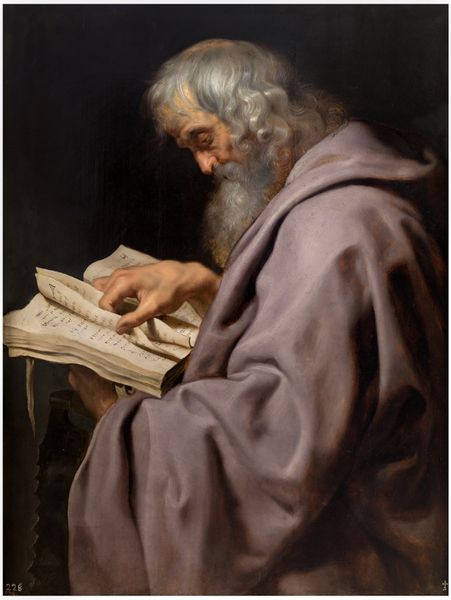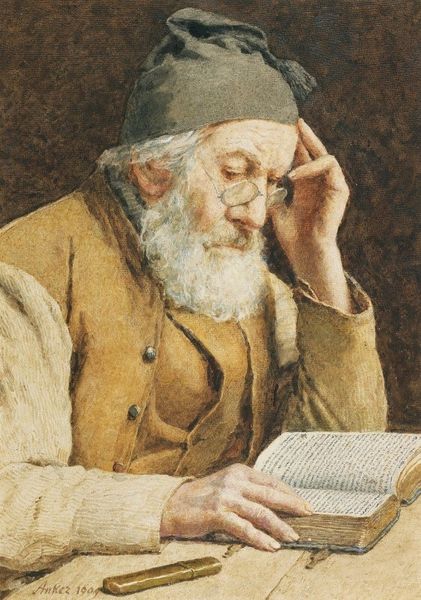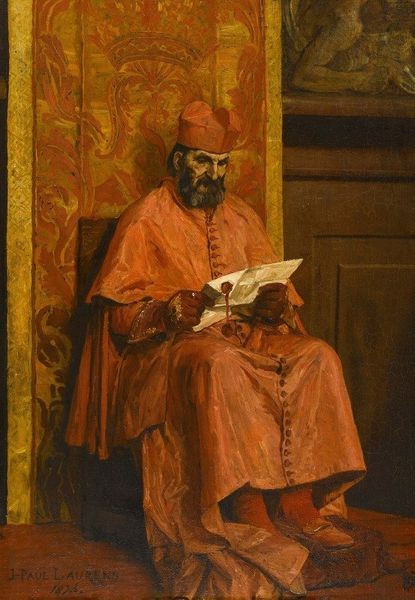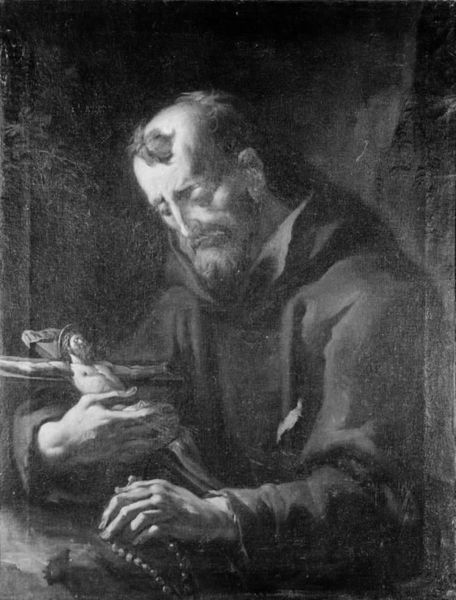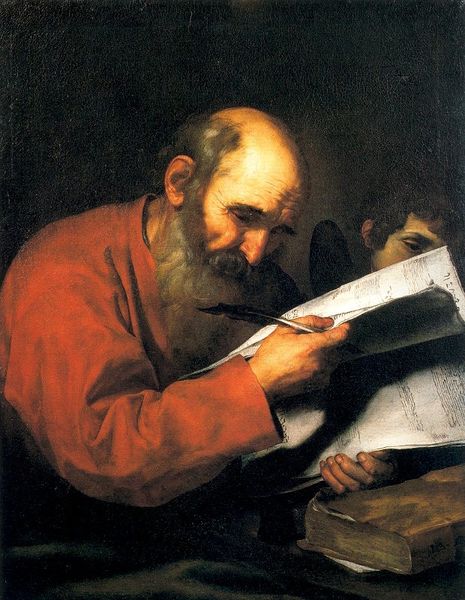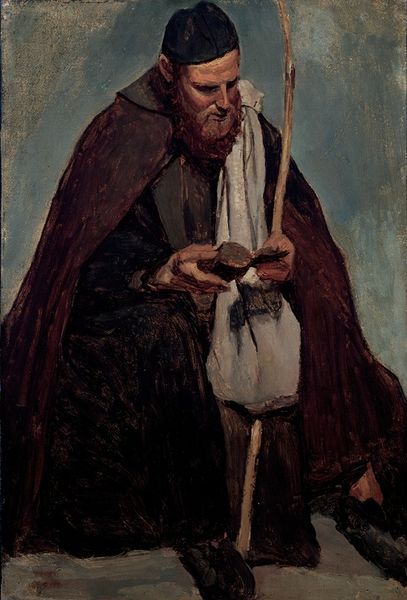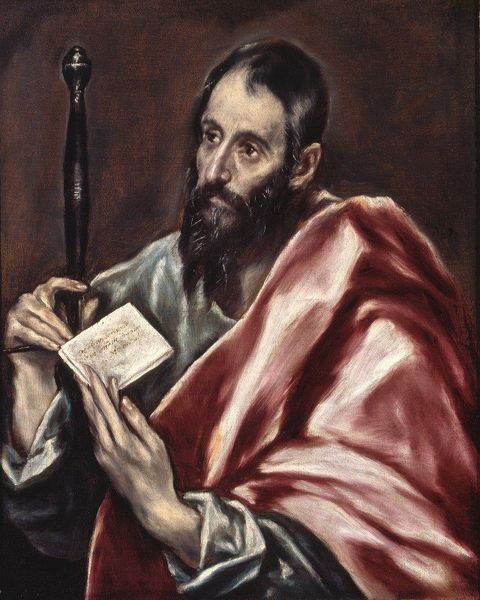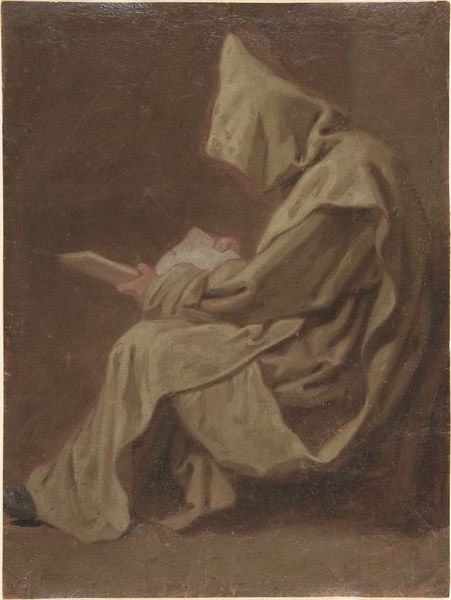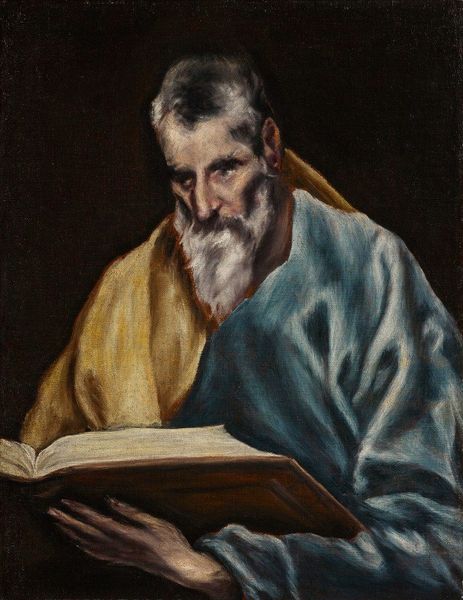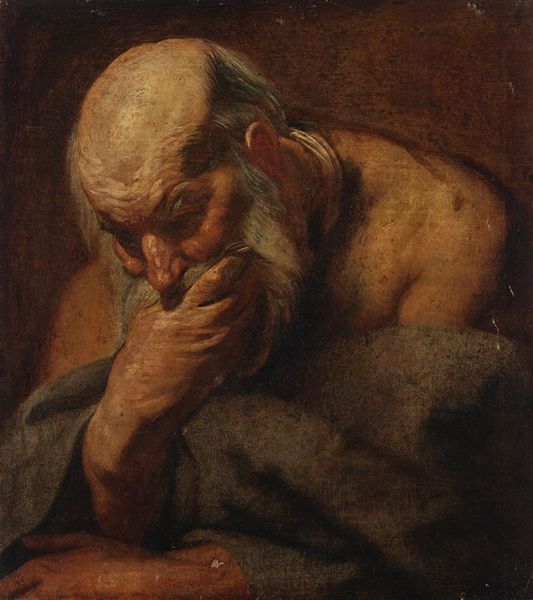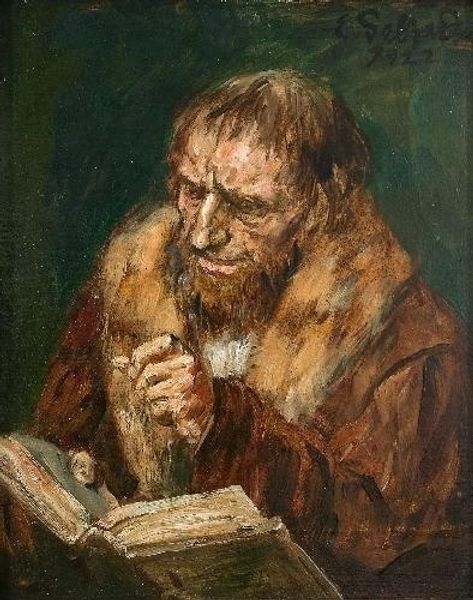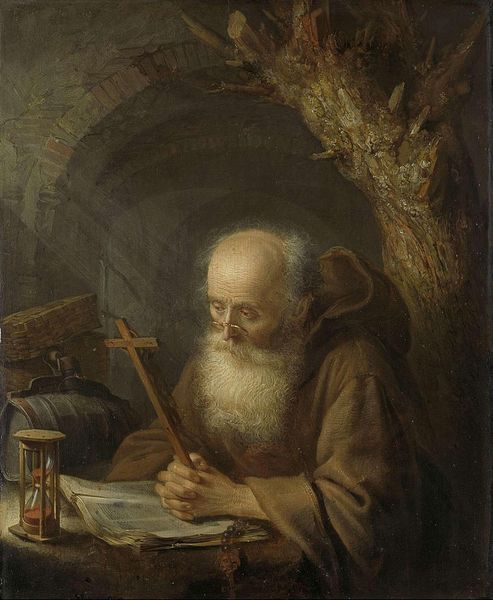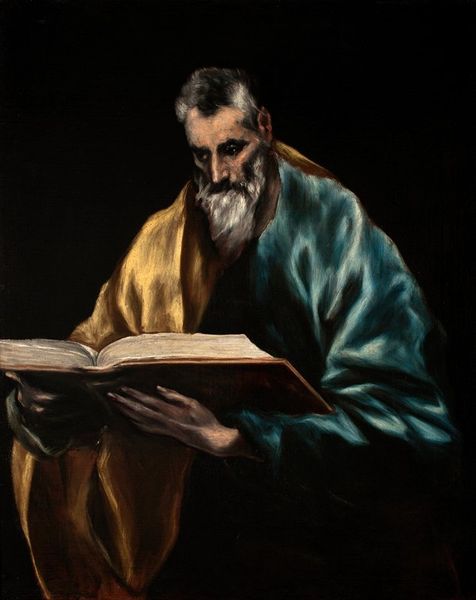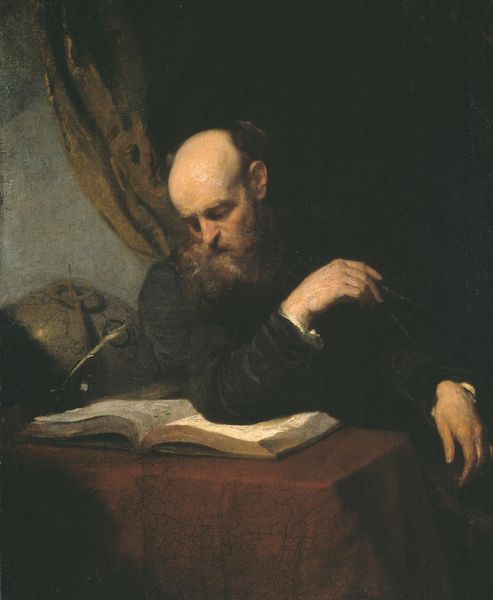
Copyright: Public domain
Curator: We are looking at "Monk in White, Seated, Reading," an oil painting created around 1857 by Camille Corot. The canvas depicts a lone figure engrossed in a book. My initial impression is one of remarkable quietude. Editor: The painting’s solemnity seems almost performative, as if solitude and piety are intertwined for the male monastic subject. This piece must be understood through the rise of 19th century monastic revival following the societal traumas after the Napoleonic Wars. Curator: Indeed. The painting achieves this mood partly through its carefully considered palette of earth tones. The layering of browns and ochres allows the monk's white habit to emerge, becoming a focal point within the composition. Editor: The use of stark whites also emphasizes the social expectations for these monastic men; Corot has employed costume to convey the inner workings of moral, hyper-masculine identity and spiritual reflection. Curator: There is also something to be said about the soft focus. It seems almost dreamlike, drawing our attention to the interplay of light and shadow on the fabric. Corot's technique seems almost more evocative than descriptive. Editor: And that light serves to remind me how this portrait captures a societal tension: this almost bourgeois indulgence in solitary pursuits contrasts with the collective suffering endured by women who bore the brunt of care work during a post-war resurgence of domestic ideals. Curator: You make a powerful point about social context. What strikes me foremost about the painting is how Corot manages to capture not just a likeness but a palpable sense of contemplative stillness through its very structure. Editor: While that formal reading holds undeniable value, situating the "Monk in White" within the turbulent socio-political landscape deepens our comprehension and reveals how Corot may also reflect historical undercurrents, thereby transforming aesthetic experience into a mode of resistance. Curator: Resistance, perhaps. What I know for sure is Corot allows us a momentary communion with quiet introspection through art. Editor: Indeed, perhaps contemplation becomes a political refuge amid socio-economic shifts during that time.
Comments
No comments
Be the first to comment and join the conversation on the ultimate creative platform.
